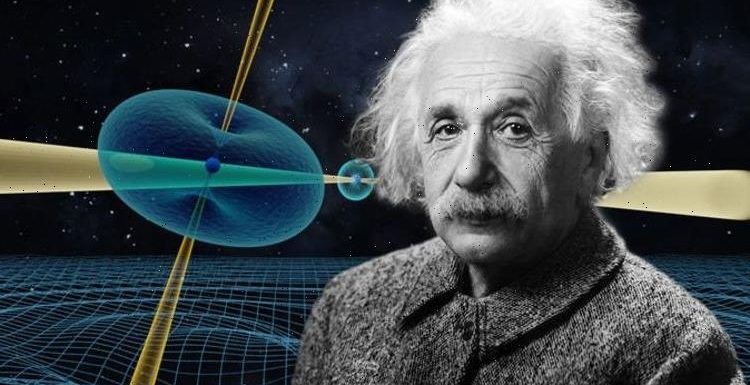
General relativity: Cosmologist discusses Einstein’s theory
We use your sign-up to provide content in ways you’ve consented to and to improve our understanding of you. This may include adverts from us and 3rd parties based on our understanding. You can unsubscribe at any time. More info
Introduced to the world in 1915, Einstein’s general theory of relativity radically changed the Newtonian model of gravity. General relativity introduced the concept of mass warping the very fabric of time and space – spacetime – and with it came the theoretical predictions for black holes and other phenomena that we know today exist. But the theory is not foolproof and despite its many accurate predictions, scientists have been unable to unite it with some of the fundamental forces governing the universe.
In particular, Einstein’s relativity clashes with the principles of quantum physics and that means it may not be the “final world in gravitational theory”, according to the authors of a 16-year-long study probing relativity to expose its flaws.
A team of international researchers has investigated a pair of extreme stars called pulsars in what has been described as the “most rigorous” test of relativity to date.
The study, which involved researchers from the University of East Anglia (UEA) and the University of Manchester, has exposed new relativistic effects that have been observed for the very first time.
The findings were published on Monday in the journal Physical Review X.
Dr Robert Ferdman, from UEA’s School of Physics, said: “As spectacularly successful as Einstein’s theory of general relativity has proven to be, we know that is not the final word in gravitational theory.


“More than 100 years later, scientists around the world continue their efforts to find flaws in his theory.
“General relativity is not compatible with the other fundamental forces, described by quantum mechanics.
“It is therefore important to continue to place the most stringent tests upon general relativity as possible, to discover how and when the theory breaks down.
“Finding any deviation from general relativity would constitute a major discovery that would open a window on new physics beyond our current theoretical understanding of the Universe.”
Any such discovery would also help scientists searching for a unifying theory of the fundamental forces of nature.
The study, which was led by Michael Kramer from the Max Planck Institute for Radio Astronomy in Bonn, Germany, used seven powerful radio telescopes to observe a pair of pulsars.
Pulsars are highly magnetised stars that fire off beams of electromagnetic radiation from their poles, much like the beam of a lighthouse.
Einstein String theory 'no longer science fiction' says physicist
Although they are much heavier than our Sun, these stars only measure about 15 miles across, making them incredibly dense.
Dr Ferdman said: “We studied a double pulsar, which was discovered by members of the team in 2003 and presents the most precise laboratory we currently have to test Einstein’s theory.
“Of course, his theory was conceived when neither these types of extreme stars, nor the techniques used to study them, could be imagined.”
The pulsars orbit each other every 147 minutes and reach velocities of about one million kilometres per hour.
Even more impressively, one of the stars is spinning at about 44 times a second, and the other has a rotation period of about 2.8 seconds.
Together, the stars have been described as the perfect laboratory to observe and test the effects of gravity.


Professor Kramer said: “We studied a system of compact stars that is an unrivalled laboratory to test gravity theories in the presence of very strong gravitational fields.
“To our delight, we were able to test a cornerstone of Einstein’s theory, the energy carried by gravitational waves, with a precision that is 25 times better than with the Nobel-Prize winning Hulse-Taylor pulsar, and 1000 times better than currently possible with gravitational wave detectors.”
So far, the observations appear to back up the theory and the scientists have also studied effects “that could not be studied before”.
According to Professor Ingrid Stairs from the University of British Columbia at Vancouver, the researchers observed for the first time how the light (radio photons) from the pulsars are warped by the curvature of spacetime and how the light is deflected by a 0.04 degree angle.
The expert said: “Never before has such an experiment been conducted at such a high spacetime curvature.”
Prof Kramer added: “We have reached a level of precision that is unprecedented.
“Future experiments with even bigger telescopes can and will go still further.
“Our work has shown the way such experiments need to be conducted and which subtle effects now need to be taken into account.
“And, maybe, we will find a deviation from general relativity one day.”
Source: Read Full Article